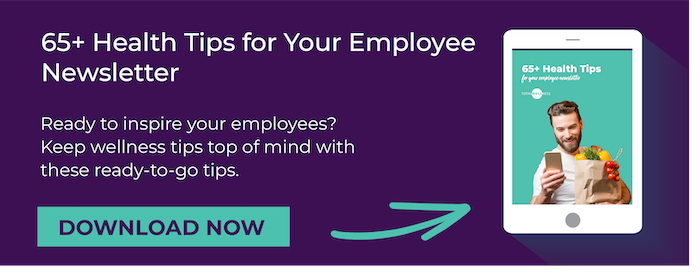 How many times have you found your employees reacting in an irrational, fearful or overly emotional way to wellness or benefit announcements? This type of response happens to all of us from time to time, and much of it can be explained by looking at a small but important part of the brain: the Amygdala.
How many times have you found your employees reacting in an irrational, fearful or overly emotional way to wellness or benefit announcements? This type of response happens to all of us from time to time, and much of it can be explained by looking at a small but important part of the brain: the Amygdala.
The amygdala is involved in memory formation, and one of its main functions is to recognize things in our environment that may cause harm to us. It then instantly triggers a full-body emotional and physical response to deal with that threat. It has three main responses to choose from: fight, flight or freeze.
I apologize for the quick lesson in neuroscience but understanding how the amygdala works can actually have a huge impact on the success of your wellness program. This week, I had the opportunity to attend the Wellness Council of the Midlands (WELCOM) quarterly symposium titled "Change Your Words" presented by Dr. David Hunnicutt. It was a fantastic presentation and highlighted how engaging people - not scaring or intimidating them - can have dramatic results in creating positive outcomes.
So how can you avoid "freaking out" your employees and keep the amygdala in check when sharing wellness information? It all comes down to calming the amygdala by modifying your messaging. Dr. Hunnicutt shared a powerful formula that can (and should) be used annually when you roll out your wellness initiatives and benefits.
Here are the seven parts of the communication formula:
- We care about you and your health...your very first message for any wellness communication should not be scary statistics about how health care cost are spiraling out of control. Instead focus on why you are helping employees make healthier lifestyle choices and how improving the quality of life is a top priority.
- Here's the vision...clearly explain what you see happening as part of the wellness program. Maybe it's 75% participation or maybe it's programs for the body and mind. This is when it helps to have a strong vision for your wellness program. Not a 500-word statement - but a mantra that employees can easily remember. For example "Healthy by Choice, Not by Chance" or "Make the rest of your life the best of your life."
- Here's how you can be a part of it...share the details of your wellness program and set expectations. The best thing is to make sure there are no surprises for employees.
- This is when it all kicks off...hands down the most common pitfall is that companies don't give employees enough time to fully understand the wellness program and how it relates to health insurance. They run out of time and want employees to make a decision in a week. While it's important to set some type of deadlines so people take action, you want to make sure you leave a minimum of eight weeks when launching a new program.
- We're already in...don't treat employees like guinea pigs. Make sure your HR team, wellness ambassadors and maybe even the executive team has a complete understanding of how the program works - let them participate in a pilot or demo so you can work out the kinks before launching to the entire organization.
- We're here to help you if you have questions or concerns...and a FAQ sheet does not count! Give employees an outlet to share their concerns via forums, presentations, online or phone.
- Together we're better...don't just throw your employees a life jacket and expect them to swim to shore. Wellness is something you do with employees, not TO them or AT them. Plus, everyone wins when employees are healthier.
What strategies do you use to communicate your wellness program with employees? Share your suggestions in the comments.



